Wood-fired hot tubs: a complete guide to these rustic garden spas
Looking at wood-fired hot tubs for your outdoor space? We've rounded up everything you need to know
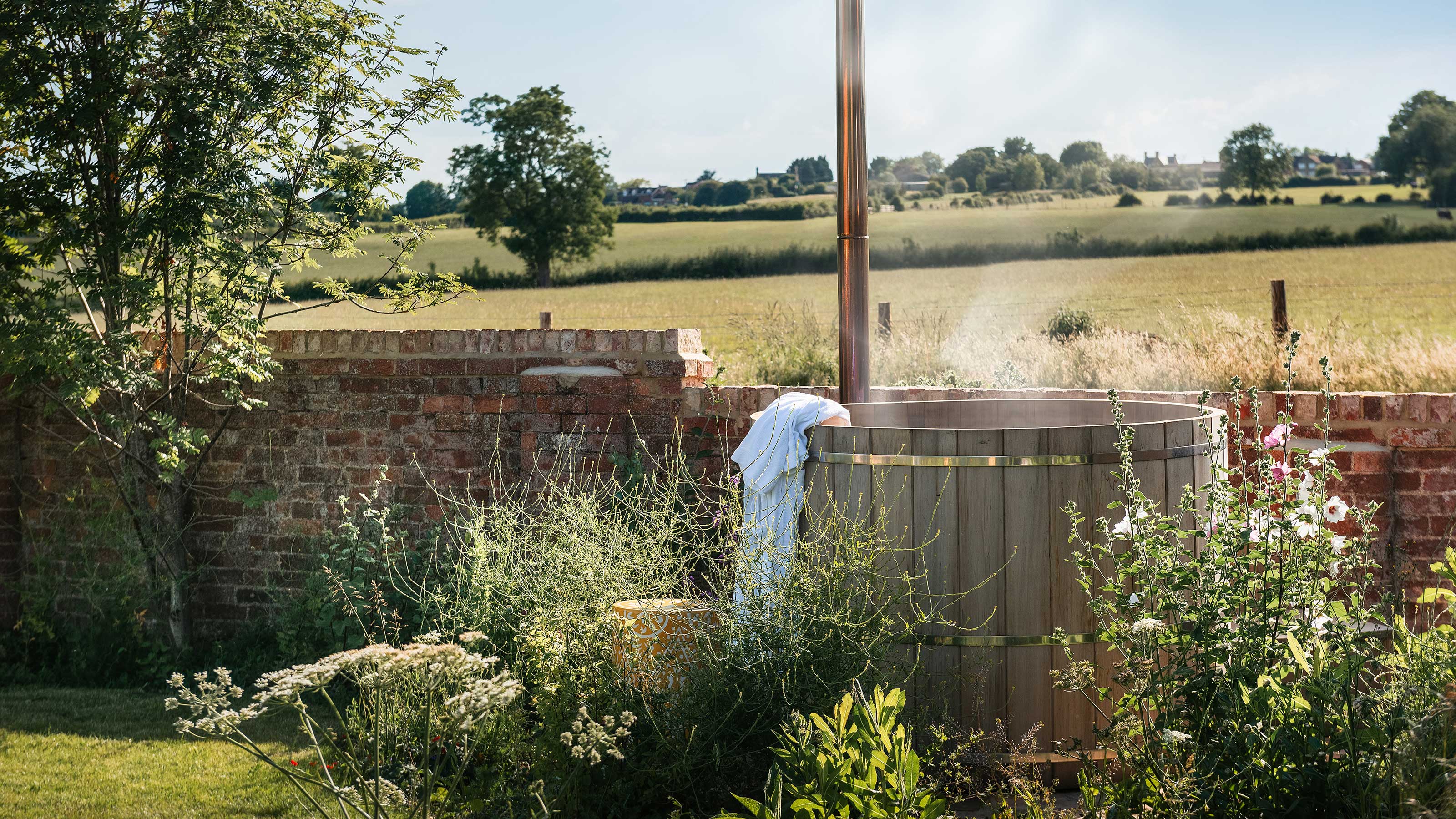

Wood-fired hot tubs are well worth considering if you're looking to upgrade your plot and create a more luxurious, spa-like scene. Offering all the relaxation benefits of the conventional, electricity-powered designs but with a more organic look, they are guaranteed to take your outdoor living up a notch.
Wood-fired hot tubs are chosen by people looking for a traditional, rustic feel, says the team at BISHTA (The British and Irish Spa and Hot Tub Association). Usually made from oak, cedar, redwood, or teak, timber hot tubs look like the wine barrels of yesteryear.
Some more modern versions are fitted with fiberglass interior shells. But, the traditional, all-timber hot tubs also offer the added benefit of natural aromatherapy that cannot be found with any other hot tub construction, as BISHTA notes. What's more, their back-to-basics charm blends into the natural surroundings of a garden beautifully. Plus, as they don't require wiring up to an electrical outlet, they can be sited in more remote places – perfect for the ultimate dose of peace and quiet.
Intrigued to learn more? We've brought together everything you need to know about these features, to help you choose whether they're the right hot tub idea for your space.
How do wood-fired hot tubs work?
Wood-fired hot tubs work by generating heat from a log-fuelled fire in a stove. These stoves are often submerged in the water, heating it directly. It is usually separated from the people using the tub by a small wooden divider. Alternatively, the stove can be external, connecting to the tub with pipes and heating the water via convection, or more specifically, thermosiphon.
Some manufacturers, such as Skargards, also offer designs where the stove is integrated within the wall of the tub itself. The result is a clean and streamlined shape, with ample space for more people.
Traditionally, wood-fired hot tubs are designed for single water use, explains BISHTA, before being drained and cleaned each time. With this hot tub maintenance approach, there is no need for chemicals, which is a bonus for those who want a chemical-free bathing experience.
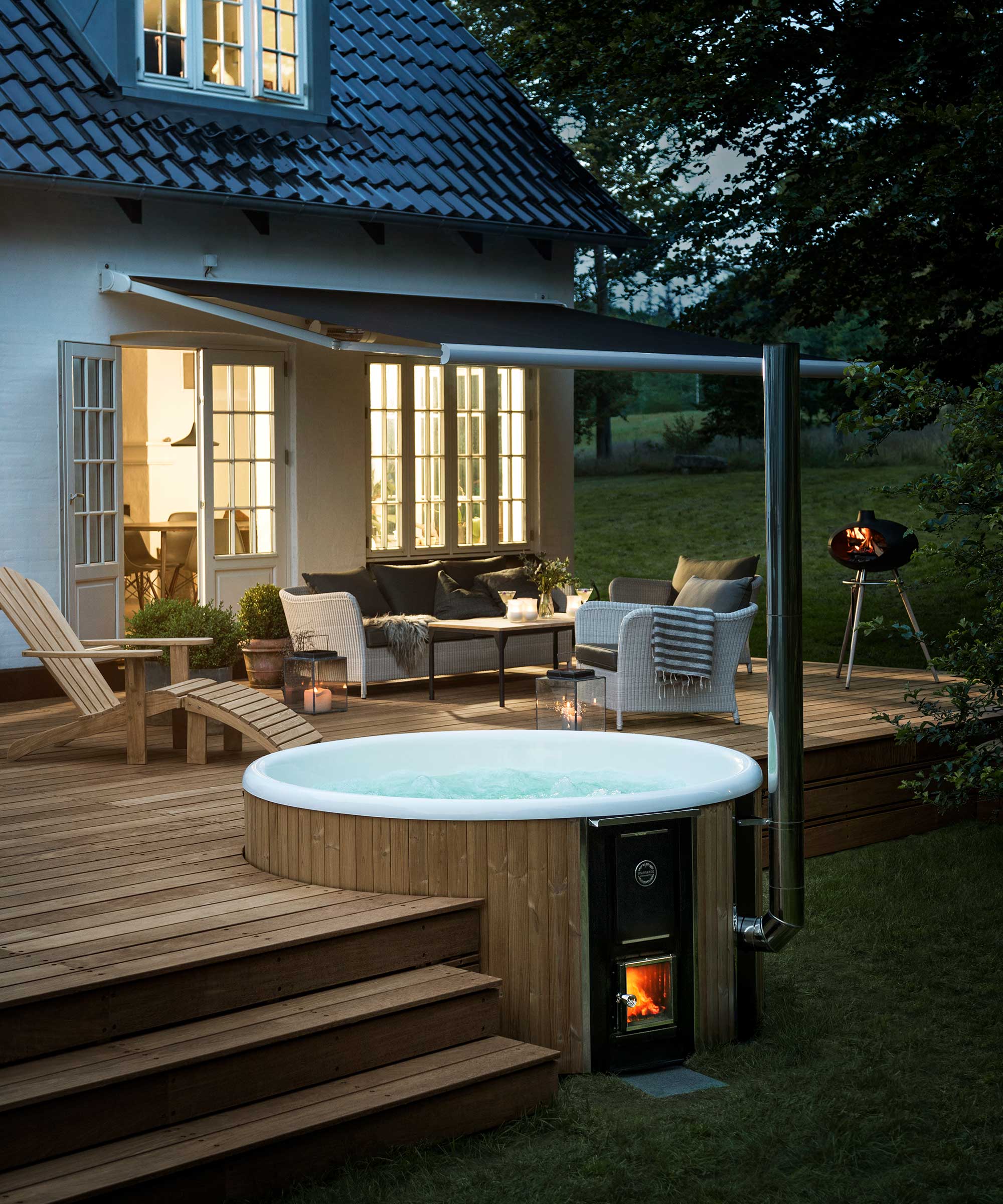
The Regal hot tub from Skargards has an integrated stove
How long do wood-fired hot tubs take to heat up?
Generally, wood burner hot tubs with submersible or integrated stoves are quicker to heat the water than those with external stoves.
However, the specific timings do depend on various factors, such as the size of your tub and the air temperature.
As a ballpark figure, expect to wait around two hours in summer for your water to reach a comfortable 102.2°F/39°C, and roughly an hour and a half longer in winter, says Skargards. Using an insulated lid can speed things up, they add.
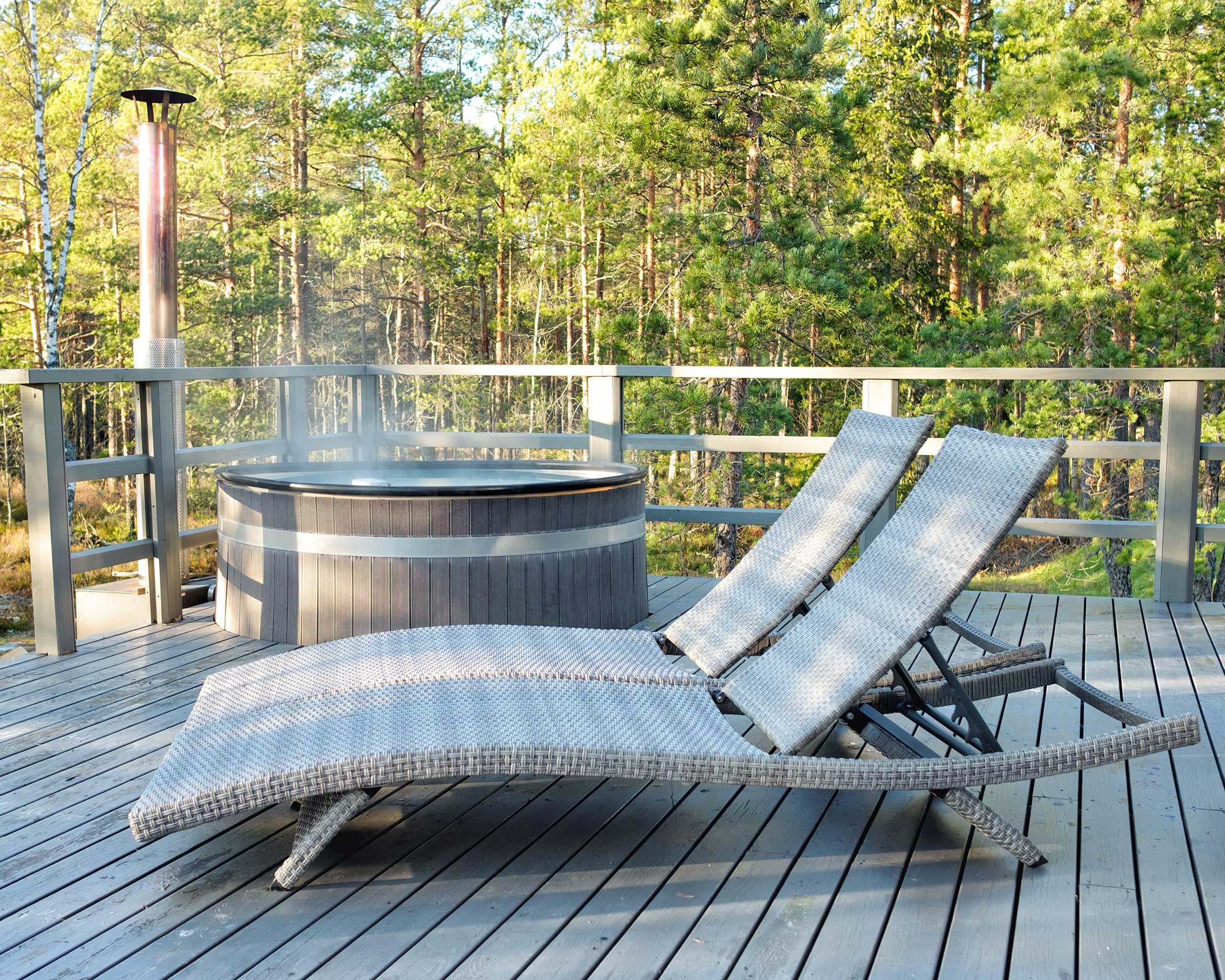
A wood-fired hot tub makes a lovely feature for a deck
How do you maintain the right temperature for a wood burner hot tub?
With some of the best hot tubs, there are built-in control panels to adjust the temperature easily. In fact, with some, you can even adjust it with an app on your phone. But, with most wood-fired hot tubs, it's a more rustic approach to getting the water 'just right', and, as BISHTA says, 'a manual temperature gauge is required.'
Varying the air supply and amount of wood added to the stove can help regulate the warmth of the water, as will adding extra cold water from the hose. Usually, you'll need to keep adding logs to the fire every 20 minutes or so until you're close to the desired temperature. At this point, you should stop adding more and close the air supply, as advises Skargards.
'It is good practice for bathers always to test the water with their elbow to see if the temperature is warm enough (and not too warm) before getting in,' says BISHTA. You can also test it with a thermometer.
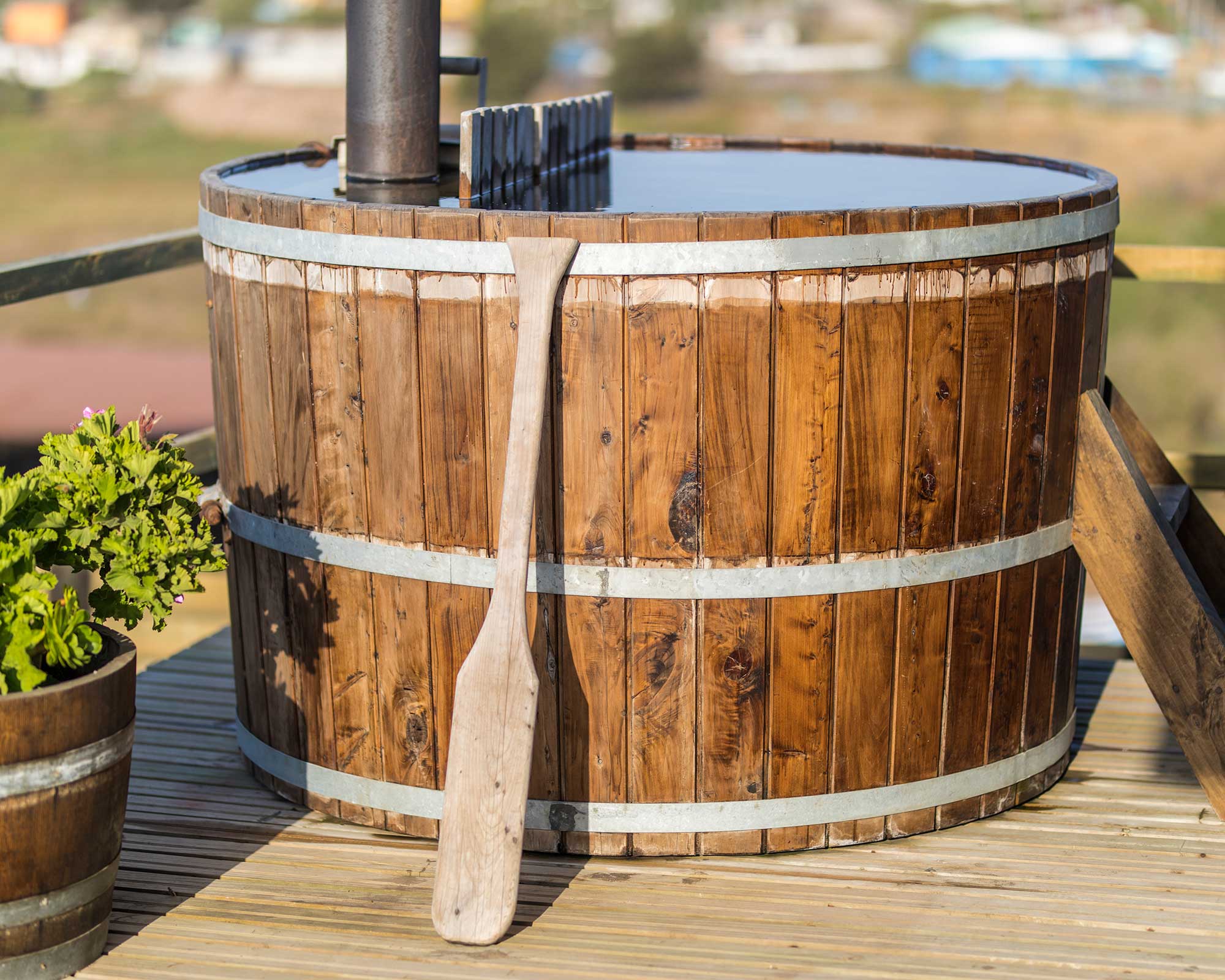
A built-in divider keeps the stove safely away from people enjoying the spa
Where should you put a wood-burner hot tub?
Creating a practical and pretty hot tub surround for your spa is an important factor when adding one of these features to your yard.
'As with acrylic hot tubs, timber hot tubs need a permanent platform to be sited,' says BISHTA. This will need to be flat and sturdy enough to take the weight of the tub, the water, and the people inside it at maximum capacity.
One of the best things about wood burner hot tubs is the fact that they can be placed in more remote locations as they don't require electricity. This makes them perfect for creating a tranquil retreat at the bottom of your plot, surrounded by lush greenery and other soothing sensory garden ideas.
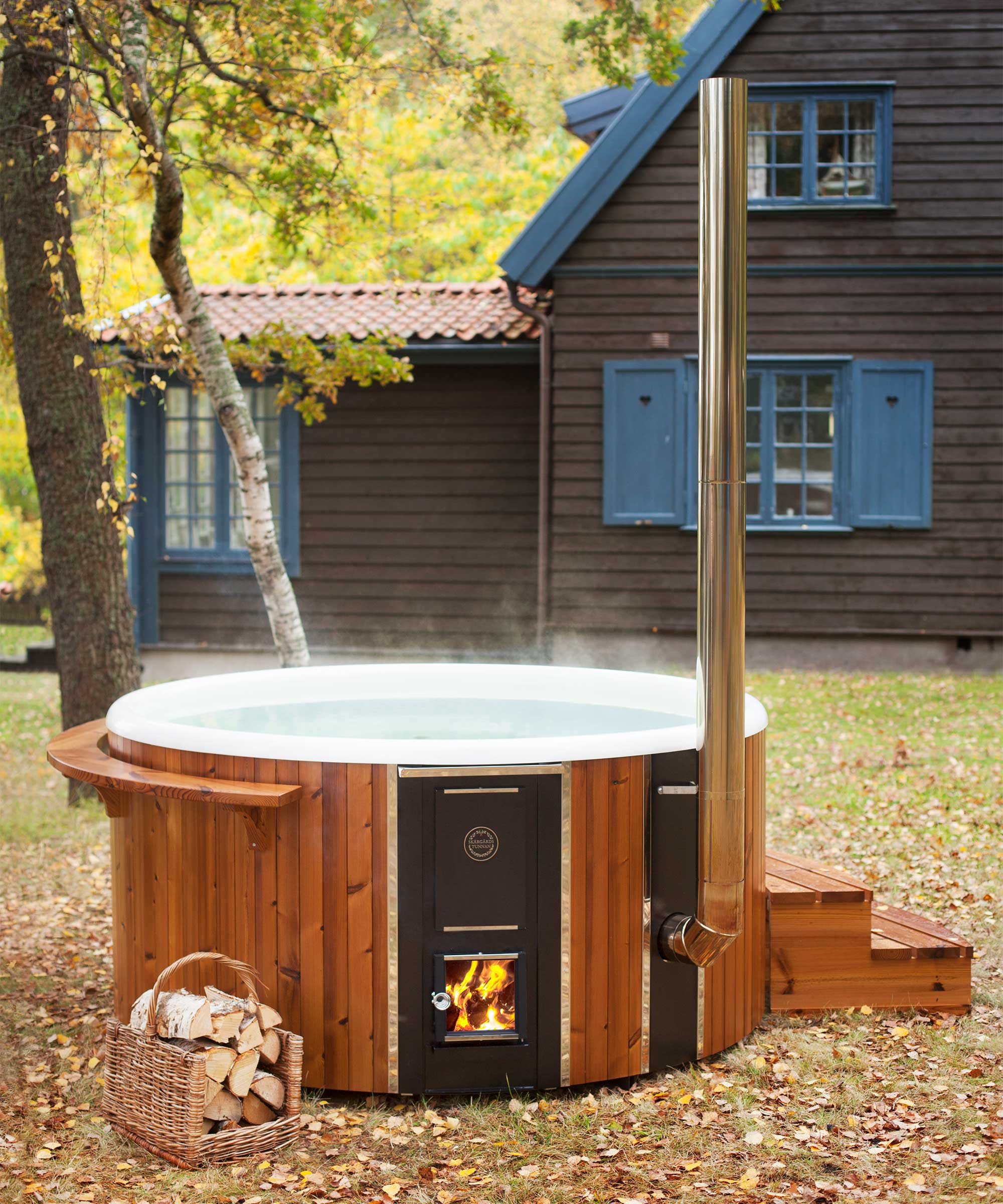
The Regal hot tub from Skargards is perfect for a relaxing soak
What is the best wood to use for wood-burning hot tubs?
As with any fire, it's best to use dry logs for a cleaner, more efficient burn. Skargards recommends dry birch wood for the best results. 'The wood fuel source should ideally be from a renewable energy source,' adds BISHTA.
Investing in good log store ideas nearby can help keep your fuel in top condition until it's ready to be used.
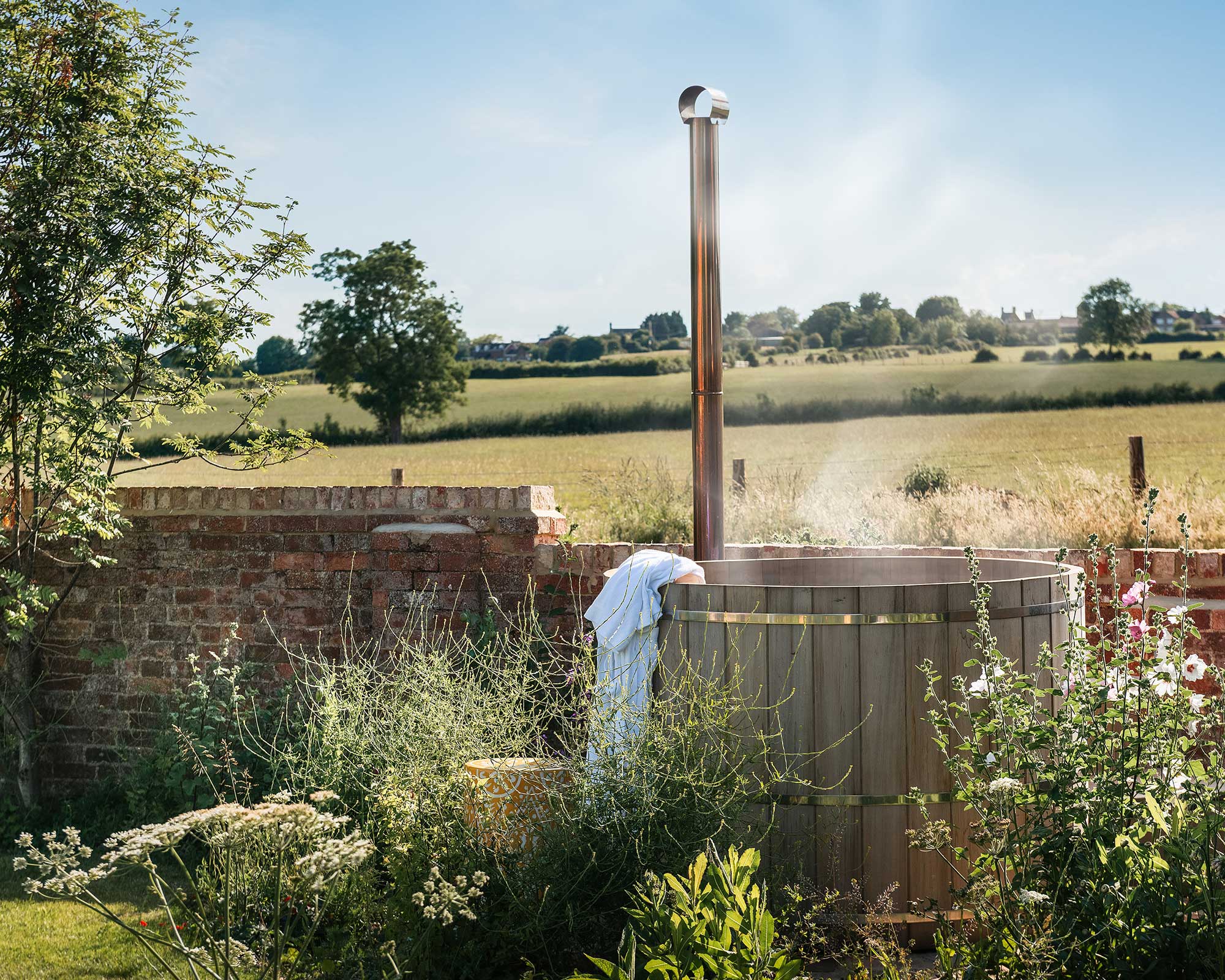
A beautiful wood-fired hot tub at Little Red Lock, luxury accommodation from Unique Homestays
What are the safety risks of wood-fired hot tubs?
There are some general hot tub dos and don'ts that should be considered with any outdoor spa. But here are some key factors to bear in mind when it comes to using wood-fired hot tubs safely:
- 'Hot parts that can potentially be touched (e.g., the lowest 1000mm [39in] of the chimney) should be protected from accidental contact,' says BISHTA. As mentioned above, most designs have an integrated divider to reduce the risk of burning.
- The stove should never be lit without water in the tub. This can lead to it overheating and melting, or creating a fire hazard.
- Pay attention to proper hot tub hygiene, especially if you're going chemical-free. Ideally, drain and clean the tub after each use.
- Don't spend too long in the water. BISHTA advises not exceeding 15 minutes at one time, followed by a break of at least five minutes. This will help prevent the risk of users dehydrating and overheating.
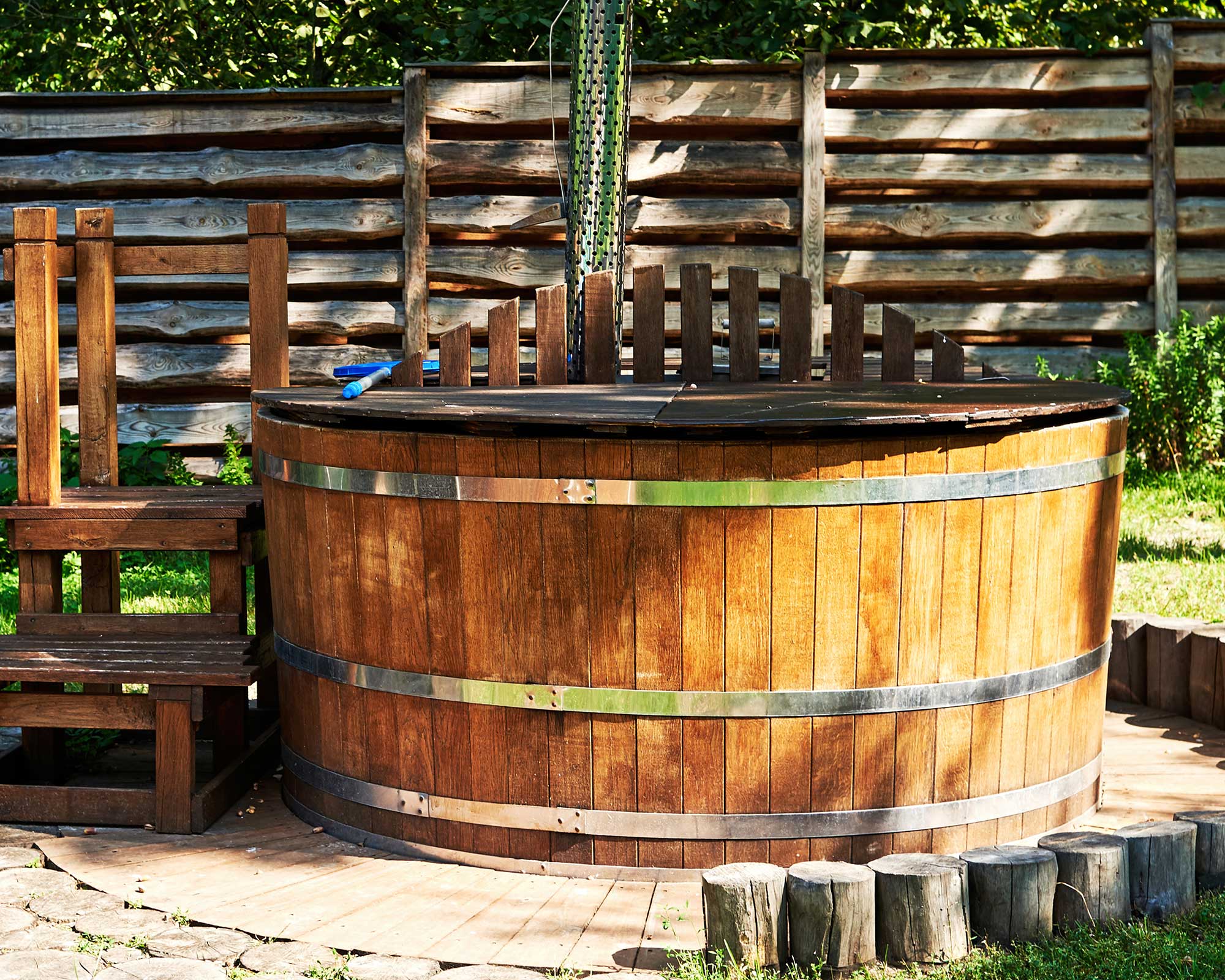
Wood-fired hot tubs make a rustic alternative to conventional models
Are wood-burning hot tubs better than electric hot tubs?
There are pros and cons of both types of tubs, so it really depends on what suits you.
For starters, there's the cost. Overall, wood-fired ones tend to be slightly cheaper to buy than conventional, hardshell tubs. However, if you're looking for a real budget-friendly option, then an inflatable hot tub might be a better alternative. And when it comes to running costs? BISHTA says that wood burner designs may provide cheaper heating costs, depending on usage.
Other bonuses of wood-fired designs? 'They also offer the flexibility to site the hot tub in remote locations where an electrical supply is unavailable,' BISHTA says. What's more, as mentioned above, 'many people choose them for their aesthetic appeal and natural aromatherapy.'
However, if you're looking for low maintenance garden ideas, then opting for a conventional hot tub might be the better choice. Firstly, they often have built-in functionalities, for example, to keep the water temperature at the required thermostat setting and run the filtration system, BISHTA explains. And, although you'll still need to clean it (and know how to drain a hot tub properly), you'll need to do so much less than with wood-burning designs. Plus, there's no ash to clean up, either.
Then there are all the extra accessories that conventional hot tubs can offer. For instance, some have LED lighting and easily-adjustable hydrotherapy jets. However, with some more high-end, wood-fired designs, these features can still be added, although access to power is required.

The garden was always a big part of Holly's life growing up, as was the surrounding New Forest where she lived. Her appreciation for the great outdoors has only grown since then. She's been an allotment keeper, a professional gardener, and a botanical illustrator – plants are her passion.
